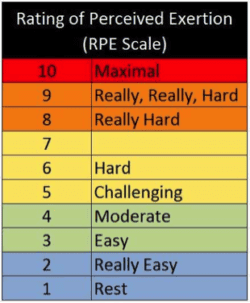By Mardi Hatch
Physiotherapist at Life Ready Physio South Perth
We all load our bodies in some way, whether that be through sport, exercise, work or household duties. Luckily our bodies are very capable of adapting and getting stronger in response to load. However, if we load our bodies too much, too quickly or in the wrong way we place ourselves at risk of an injury.
Training load is determined by the type, volume, frequency and intensity of training that we do and the way in which our bodies adapt to this training load is influenced by many individual factors.
Load management is an integral part of injury prevention in both a sporting and general population. Injuries most commonly have multiple risk factors and a common one of these risk factors is an error in load management, such as a rapid change in training load.
If you increase your load too quickly, your tissues may not be able to adapt quickly enough and an injury may result. Whereas if you gradually increase you load, your tissues will have time to get stronger and be able to cope with the volume and type of load that you need to achieve your fitness and training goals.
Equally, when you offload or underload your body, strength adaptations can be lost which also increases the risk of injury. This becomes especially important when returning from an injury or from a break in training or a holiday. If you were to return to the same level of training and load as you were doing before your break, you are essentially overloading your tissues and thus placing them at risk of injury. To avoid this, a gradual return to pre-holiday load over several weeks, and sometimes even months to minimise injury risk should be utilised.
When measuring training load, it is important to consider ‘external load’, which is the time that you spent training or the distance or volume that you achieved. It is also important to consider your ‘internal load’, which is how hard you worked for that given time of distance.
Internal training load can be measured using your heart rate or more simply, using a scale called your Rate of Perceived Exertion* or RPE (see below). Your RPE is a self-reported score out of 10 that you can use to subjectively score how hard a training session was. This can be an extremely useful tool that your physiotherapist can use to determine your training loads and whether your load management is appropriate.
Remember, physiotherapy can assist not only with injury treatment, but equally with injury prevention and load management. Your physiotherapist can help to establish a load that is safe for you and develop a management plan with you to gradually increase this load to allow you to get to your full capacity whilst remaining pain free and minimising your injury risk.

